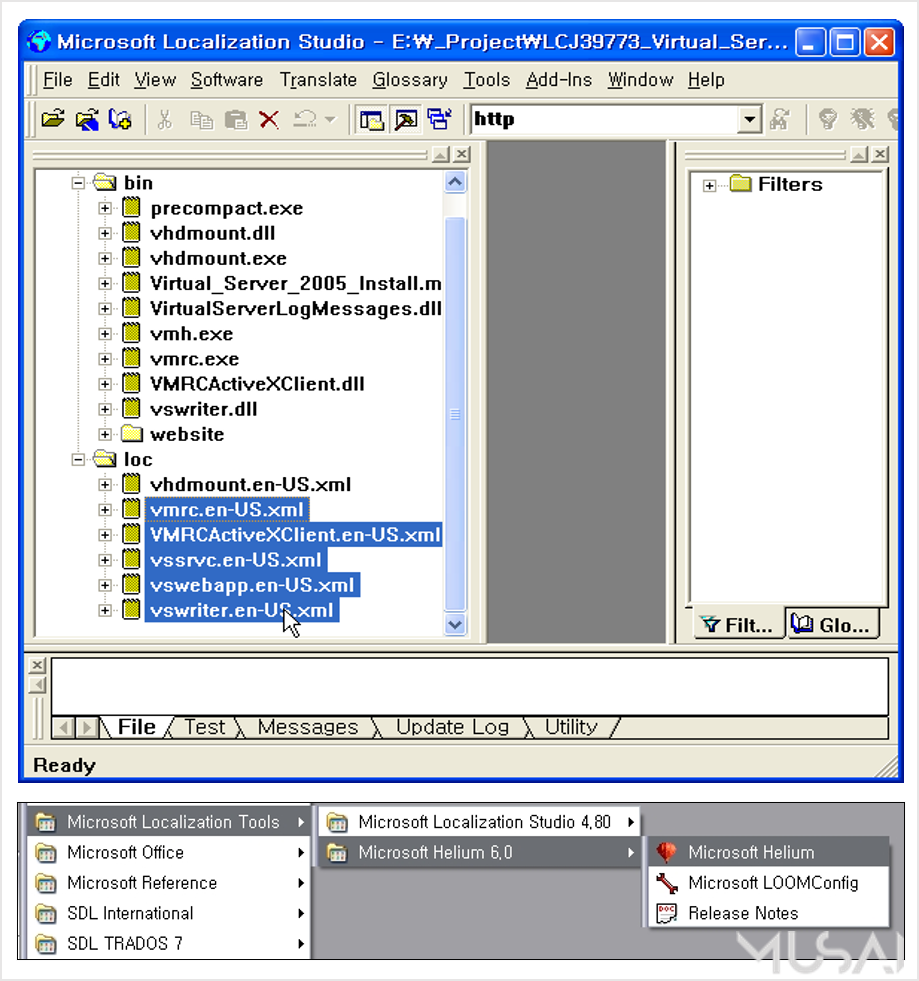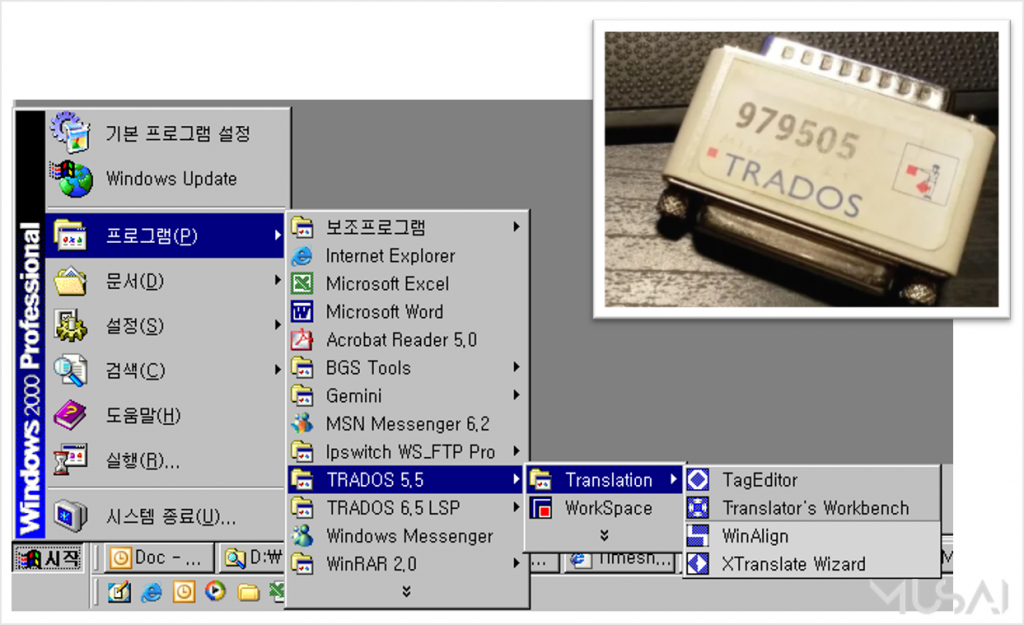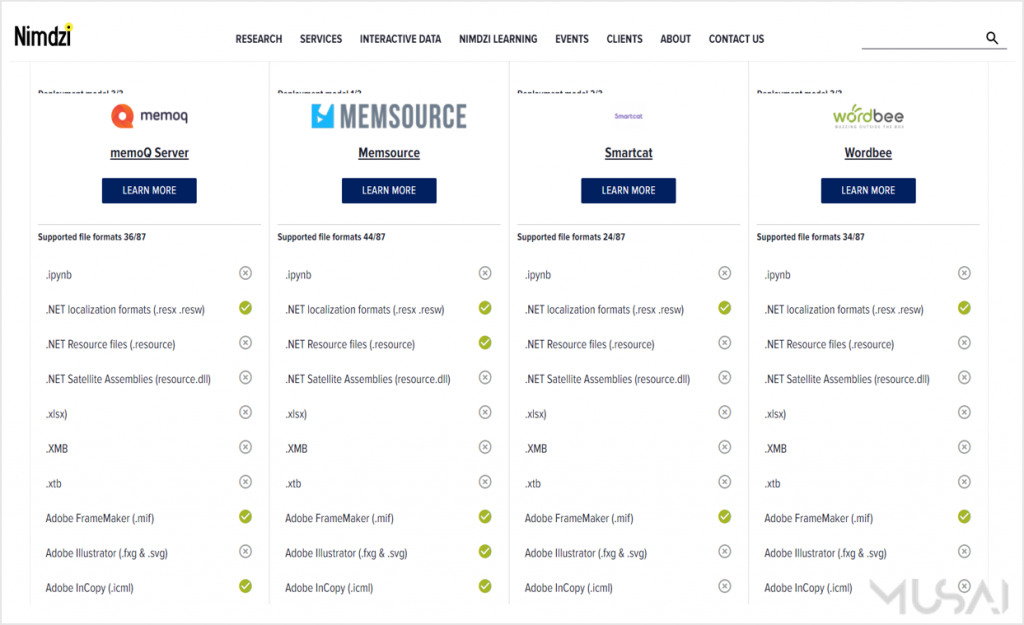[MUSAI] Which CAT Tool is the Best for the Game Localization?

2021-06-03

As the types of translation tools become diversified, many people are wondering which tools to use when starting a localization project. So, we will discuss Computer-Assisted Translation tools (called CAT tools) in this column. In fact, the title – which cat tool is the best for the game localization, may have you expect that we pick one brand or company of CAT tool as an answer, but I apologize in advance it won’t be. Since the best translation tool will be different depending on the users and purpose, I will share the information and trend in the game localization industry to help you to choose the right tool for your project.
How Have CAT Tools Been Changed in the Game Localization Industry?
Having been in the localization industry for about 20 years, I was able to experience the big and small changes of CAT tools. Considering that the localization industry is changing slower than other industries, I can say that the change in CAT tools is remarkable.
At the time I first joined in the localization industry, the name TRADOS was synonymous with CAT tools. In the case of large IT companies which have massive projects to localize, they developed and used their own CAT tools such as ‘LocStudio’ and ‘Helium’ of Microsoft. Some of you may be familiar with the screenshot below.

If the client had their own CAT tool like above, they provided it to the outsourced translation company for free. So, translation companies usually used it or purchased the license of TRADOS as many as needed. Look at the image below. It was called ‘TRADOS Dongle’. It was necessary to use TRADOS in a manner of license policy. Are you familiar with the image? You can’t help but admit that you are old!

Interestingly, to make up for the shortcomings of CAT tools, auxiliary tools are used. That is, they were the tools to “assist” the translation “assistant tools”. QA tool was also operated separately. The engineers at each translation company developed those auxiliary tools respectively for the file format and project’s requirements, and I admired these brilliant engineers at that time.
As it was a transitional period when various tools were developed, a lot of errors occurred. The life of a localization PM was like the battle against errors every day. A day without a cleanup error before delivery was the only day that I could enjoy a glass of drink in a good mood. How about the day with errors? Of course, I had to go for a drink to chill out after the battle!
Like this, the L10n engineers were essential partners for PMs. Nowadays, due to the development of software and support tools, the place to stand as an L10n engineer has been smaller. We will discuss the L10n engineers in the next article with more details.
Competitive Era of CAT Tools with Tons of Brands, Use Comparison Site!
Let’s back to the present. Honestly, there are many different brands of CAT tools out there right now. Occasionally, some clients ask me to recommend one, but there are so many that it’s hard to pick one. The option is various depending on ‘who the user is – translators, translation agencies, or client’s companies’, ‘what the purpose is – translation, translation process management, or contents management’, ‘what platform will be used – server, cloud, or private’, etc. After setting your own criteria, it is good to look up the ‘Tool comparison service’ provided by some companies.
First. When comparing CAT tools for a corporation rather than an individual
▶ ‘TMS(Translation Management System) Feature Comparison Tool’ by Nimdzi: https://www.nimdzi.com/tms-compare/

Second. When comparing CAT tools for an individual
‘PROZ’ also provides a tool comparison service. Comparisons of various aspects such as operating system, supported file format, price, QA function, glossary management, compatibility, translator management availability, security and MT Plugin support are all presented. You can also check the reviews and evaluations of translators from ‘PROZ’.
▶ Software Comparison Tool by ‘PROZ’: https://www.proz.com/software-comparison-tool/cat/cat_tools/

By this point, you might be wondering, “So, what are the most used tools?”, and PROZ seems to have the same question. They conducted a survey on the topic on their forum, and as a result, TRADOS, the traditional CAT tool brand, took first place.
▶ The survey by PROZ, ‘CAT tool use by translators: what are they using?’ https://go.proz.com/blog/cat-tool-use-by-translators-what-are-they-using

What is the Most Used CAT Tool in the Game Localization Industry?
So far, we’ve discussed the translation tools used in the localization industry in general, but this time we will move on to the translation tools used in the game localization industry with my personal experience.
It is possible to be expected that TRADOS, which took first place in the PROZ survey, will be used the most for the game localization as well. Of course, Trados is a good tool that implements all the functions needed in the current localization industry. The only problem was that it was a bit heavy and expensive compared to other products.
Meanwhile, in the early 2000s, MemoQ appeared with an appropriate price, an intuitive interface, and useful functions. European game localization companies started to use it one by one, and then it moved to the Asian market gradually. For these reasons, the support for Asian languages (e.g. CCJK) was not enough in the early version of MemoQ. Like this, MemoQ which spread as game localization companies and freelance translators started using it, is now quite famous as a game localization CAT tool. (Well, its price is rising little by little as gaining popularity though.)
For your information, MemoQ distributes an E-Book related to the game localization. If their advertisements don’t bother you, I recommend you take a look. It is a well-organized material on the game localization.
▶ E-Book Download: https://www.memoq.com/resources/ebooks/locland-game-localization
Although MemoQ is the most popular in the game localization industry, SmartCAT with good cost-effectiveness, Memsource fitting up the software localization, and Wordbee which is unexpectedly used a lot by the client-side, are also widely used in the game localization. You can easily see the difference between each tool by comparing the sites introduced above.

CAT Tool Selection Depending on ‘Who Uses It’
When choosing a CAT tool, there are more factors to consider depending on your position than just features and price. In the case of a localization agency, it is important to know which tools the freelance translators have. If you are a localization manager for a game developer or publisher, you should also consider the process-related aspects, such as how to use the CAT tool to deliever the files and feedback to outsourced translation companies.
In the case of a freelance translator, it is recommended to get used to a diversity of CAT tools in advance. If you master one, you can quickly learn another tool. For example, you only need to understand where and how the corresponding function is implemented in other tools and what is the shortcut key. Moreover, it is also helpful to own a license for the brand of CAT tool that you use the most. This is because, from the perspective of translation companies, the rental of CAT tools is also counted as an expense, so they prefer translators who own the CAT tool license.
For aspiring translation freelancers or job seekers in the localization industry, I would like to say that learning CAT tools is important but learning Excel first. In fact, the most used tool in the localization field is Excel unfortunately. You may think “we use CAT tool to make up the inefficiency of Excel and Word, but you recommend learn Excel first?” and be doubtful for what I said. However, there are many projects simply finished by using Excel instead of CAT tools and most of the source files sent from clients are in the form of Excel. That’s why I emphasize Excel skills at least an intermediate level or higher.
As mentioned earlier, the best CAT tool can be different depending on each case. Indeed, it is not easy to change a translation tool once you decide, and that makes it difficult to choose for the first time. Hope that today’s column helps you to make the best decision in the flood of information.
** Did you enjoy the news of Musai? Please click subscribe and share the story.
BOOST YOUR PLAY! Musai Studio







